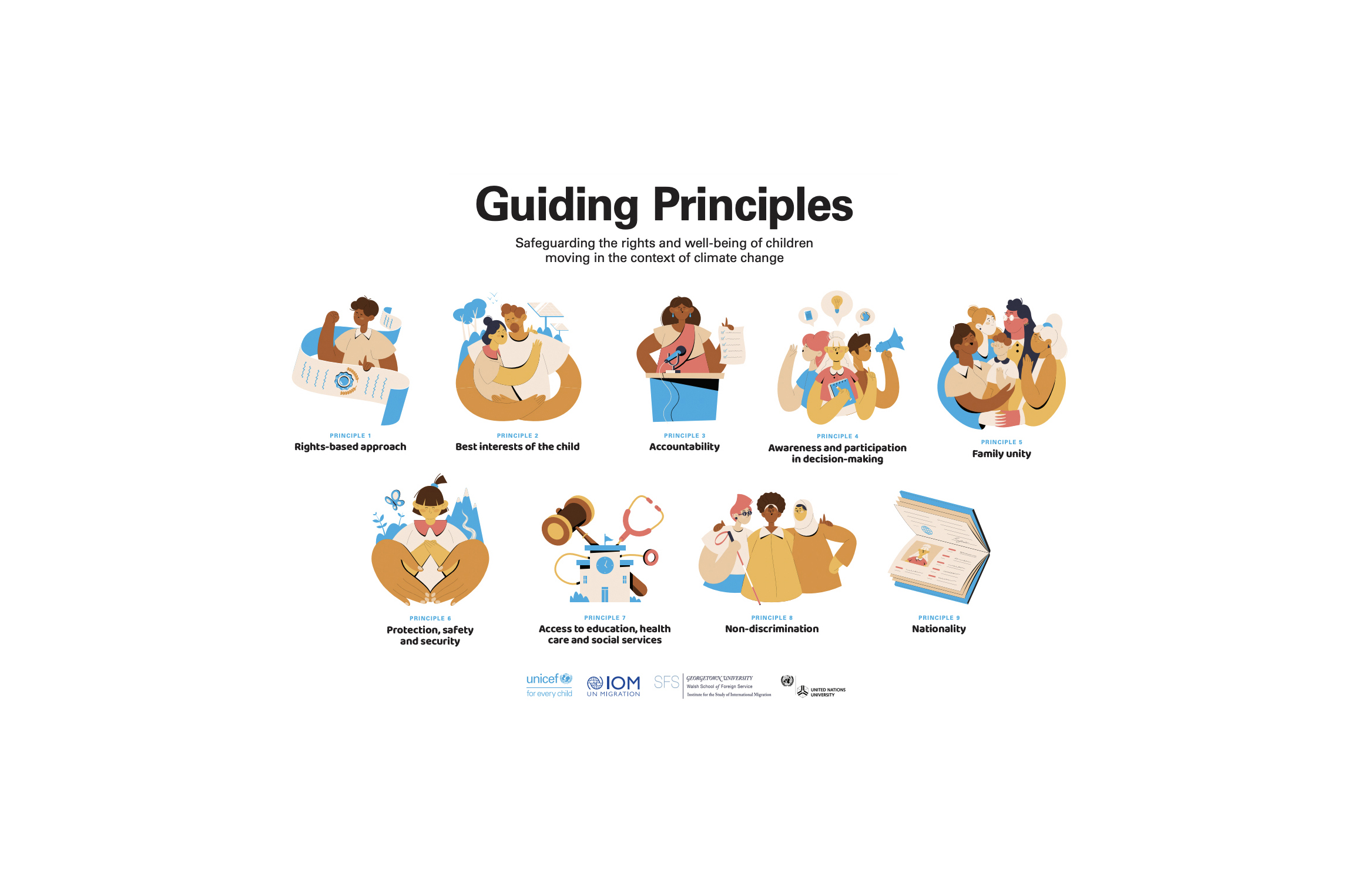By Lucy Szaboova, Consultant, Cristina Colón, UN Children’s Fund (UNICEF), and Elizabeth Ferris, Georgetown University
The children of today are the adults of the future, which places them squarely at the heart of the sustainability agenda. After all, sustainable development is fundamentally about leaving our future generations with a healthy and thriving planet. That means that upholding and protecting the rights of children, enshrined in the UN Convention on the Rights of the Child (CRC), is crucial for delivering on the ambitious vision of the 2030 Agenda for Sustainable Development.
Climate change and associated crises are among the most pressing challenges threatening children’s rights. Children who are compelled to move in in this context are especially vulnerable.
Children moving in the context of climate change are at risk of rights violations
In 2021, UNICEF reported that countries classified as being at extremely high risk due to the impacts of climate change are home to almost half of the world’s 2.2 billion children. Globally, around 500 million children live in areas with very high risk of flooding and nearly 160 million live in areas with extreme or high risk of drought. More and more children and families are compelled to move in response to climate change, which often exacerbates existing social, economic, political, or environmental challenges and shapes the need or decision to move.
Children may travel with their families, or they might undertake the journey without an adult. They might also become separated from family during their journey. In terms of motivation, their movement ranges from voluntary migration, driven by aspirations for better education and opportunities elsewhere, through forced displacement in the aftermath of weather-related shocks, to planned relocation in anticipation that places will become uninhabitable due to climate change.
Children who move in the context of climate change may indeed enjoy new opportunities and achieve their aspirations, but they may also be exposed to a range of risks such as abuse, violence, trafficking, or exploitation. Children are inherently more vulnerable to these risks, because of their evolving physical, psychological, and emotional development, which mediates their capacity to demand and exercise their rights. Their experiences can vary, depending on age, gender, ethnicity, disability, and other social markers of difference.
Discussions at a UNICEF-IOM symposium, which explored the implications of climate-related migration and displacement for children and youth, concluded that despite children’s heightened vulnerability to rights violations in the context of climate-related mobility, there remains a key policy gap. Child-related migration policies tend not to consider climate and environmental factors, while climate change policies usually overlook children’s needs.
New Guiding Principles can help protect children’s rights
Responding to this crucial gap, UNICEF – in collaboration with the International Organization for Migration (IOM), Georgetown University, and the UN University (UNU) – developed a set of ‘Guiding Principles for Children on the Move in the Context of Climate Change,’ to support governments, non-governmental organizations (NGOs), civil society organizations (CSOs), and international agencies in meeting their responsibility to uphold the rights of children who move in the context of climate change. These nine principles aim to ensure that risks threatening the safety, security, and well-being of children on the move are minimized, so that they can fulfil their potential as key agents in the fight against climate change.
The Guiding Principles apply to all children who move in the context of climate change, whether they move within their country of origin or to international destinations, temporarily or permanently, on their own or with caretakers, and whether they move through regular or irregular channels. They also apply to children who cannot or choose not to move, including children “left behind” by migrating parents, but whose enjoyment of rights may also be negatively impacted by climate change.
The Guiding Principles are a win for the SDGs
The SDGs are key to securing children’s well-being, while the realization of children’s rights is key to securing a sustainable future. As children’s rights and the SDGs are linked and mutually reinforcing, the Guiding Principles can help further the ambitions of the 2030 Agenda. While the Guiding Principles, which are derived from the CRC, bear relevance for all SDGs, they can particularly aid the achievement of:
- SDG target 10.7, on facilitating safe, orderly, regular and responsible migration;
- SDG 16 targets on ending violence, exploitation and abuse against children, ensuring access to justice for all, ensuring participation in decision making, and legal identity for all;
- SDG target 11.1 on ensuring access to adequate, safe, and affordable housing and basic services;
- SDG 5 on gender equality and empowerment and ending gender-based discrimination;
- SDG 3 on healthy lives and well-being; and
- SDG 4 on inclusive and equitable education.
